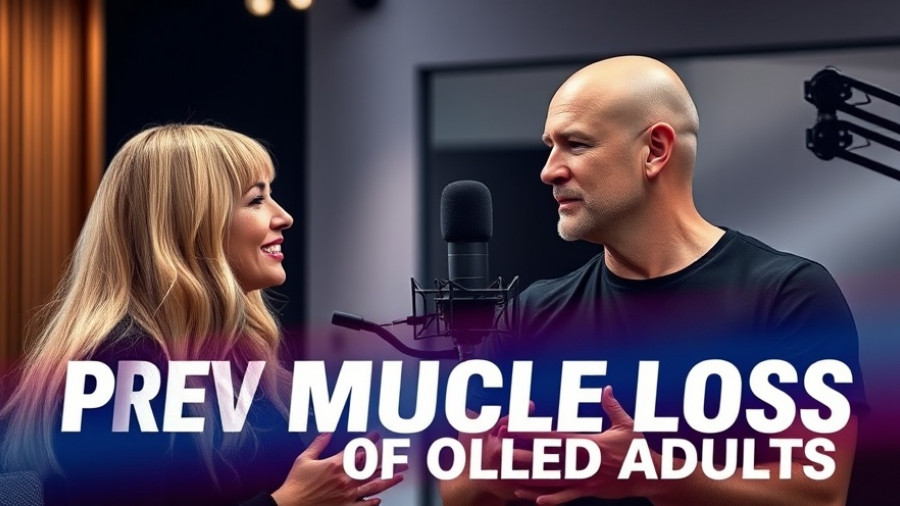
Understanding Muscle Loss in Aging
As individuals age, maintaining muscle mass can become a daunting challenge. Muscle loss, also known as sarcopenia, is a natural part of aging, often beginning as early as our 30s. This gradual decline in muscle strength can impact overall health, mobility, and quality of life. Recognizing the importance of addressing this issue is crucial for adults aged 25 and over who are looking to maintain their physical well-being and vitality.
In 'How Older Adults Can Stop Muscle Loss | Rhonda Patrick, Ph.D.', the discussion dives into vital strategies to prevent muscle decline, exploring key insights that sparked deeper analysis on our end.
Essential Strategies to Combat Muscle Loss
To effectively counteract muscle loss, a multifaceted approach is vital. Here are some key strategies:
- Strength Training: Engaging in regular strength training exercises can significantly enhance muscle mass. Incorporating resistance training into your routine at least twice a week can help stimulate muscle growth.
- Protein Intake: Ensuring an adequate protein intake is fundamental. Aim for 0.7 to 1 gram of protein per pound of body weight, focusing on complete proteins from sources such as lean meats, legumes, and dairy.
- Regular Physical Activity: Staying physically active not only enhances strength but also supports overall vitality. Activities such as walking, dancing, or yoga can contribute positively to muscle maintenance.
The Role of Nutrition and Supplements
A balanced diet enriched with specific nutrients plays a pivotal role in combating muscle loss. Here are critical elements to consider:
- Vitamins and Minerals: Vitamins D and B12, as well as minerals like calcium and magnesium, are essential for muscle function. Ensuring these nutrients are included in your diet can support better muscle health.
- Nutritional Supplements: Natural supplements such as creatine and branched-chain amino acids (BCAAs) may offer additional support in combating age-related muscle decline. Consult with a healthcare provider before using any supplements.
Prioritizing Holistic Wellness
Holistic wellness encompasses not only physical fitness but also mental health. Practices such as mindfulness meditation can help manage stress, which is important as stress can negatively affect muscle recovery and overall health. Incorporating stress relief strategies into your daily routine can facilitate better health outcomes.
The Importance of Staying Active as You Age
As highlighted in Rhonda Patrick's informative video, it’s crucial to stay engaged in physical activity throughout your life. Understanding that muscle mass is not just about aesthetics but plays a significant role in maintaining a healthy lifestyle, boosting metabolism, and improving overall well-being is essential.
Taking Action for a Healthier Future
By implementing these approaches, individuals can create a robust foundation that supports muscle maintenance and overall health as they age. Staying informed about health and wellness practices is an empowering step towards longevity.
With the right strategies, you can effectively combat muscle loss, promote a healthy lifestyle, and boost your overall resilience as you age. Whether it’s through nutrition, exercise, or holistic practices, the benefits of maintaining your muscle mass extend far beyond physical appearances; they enhance your life quality and longevity.
 Add Element
Add Element  Add Row
Add Row 




Write A Comment